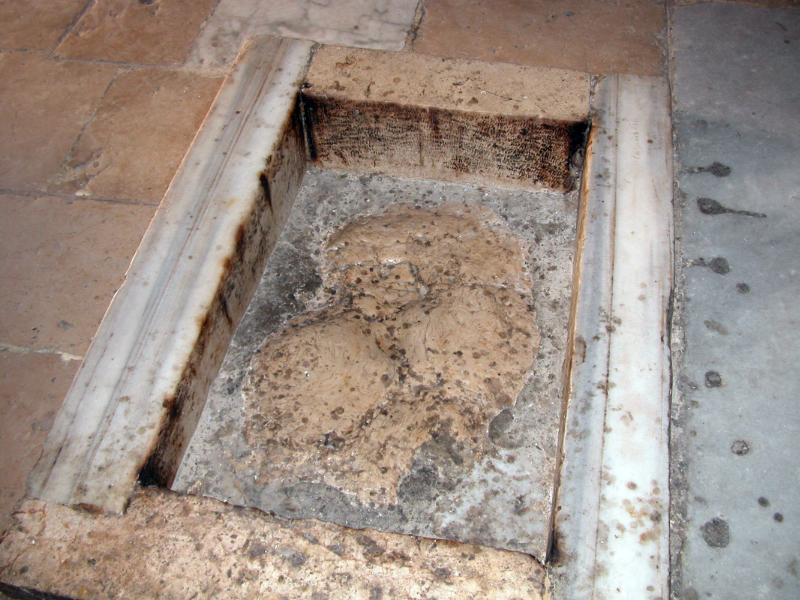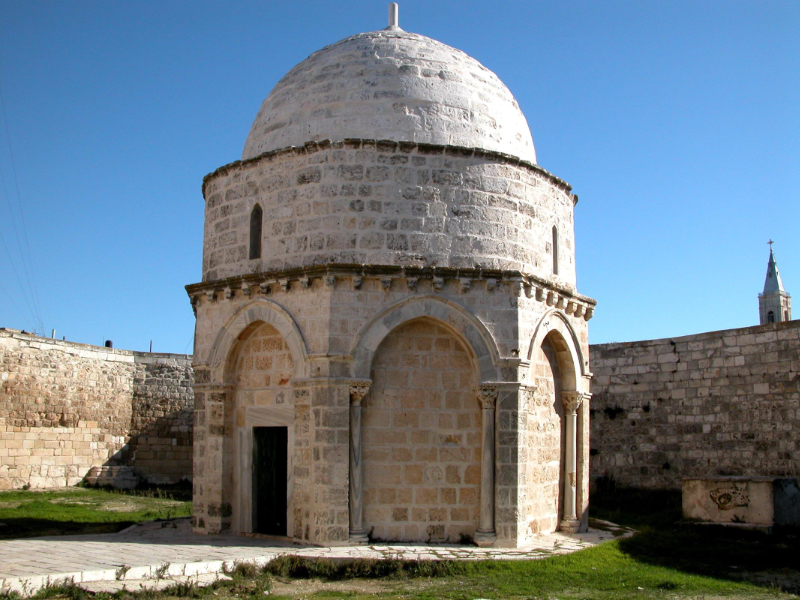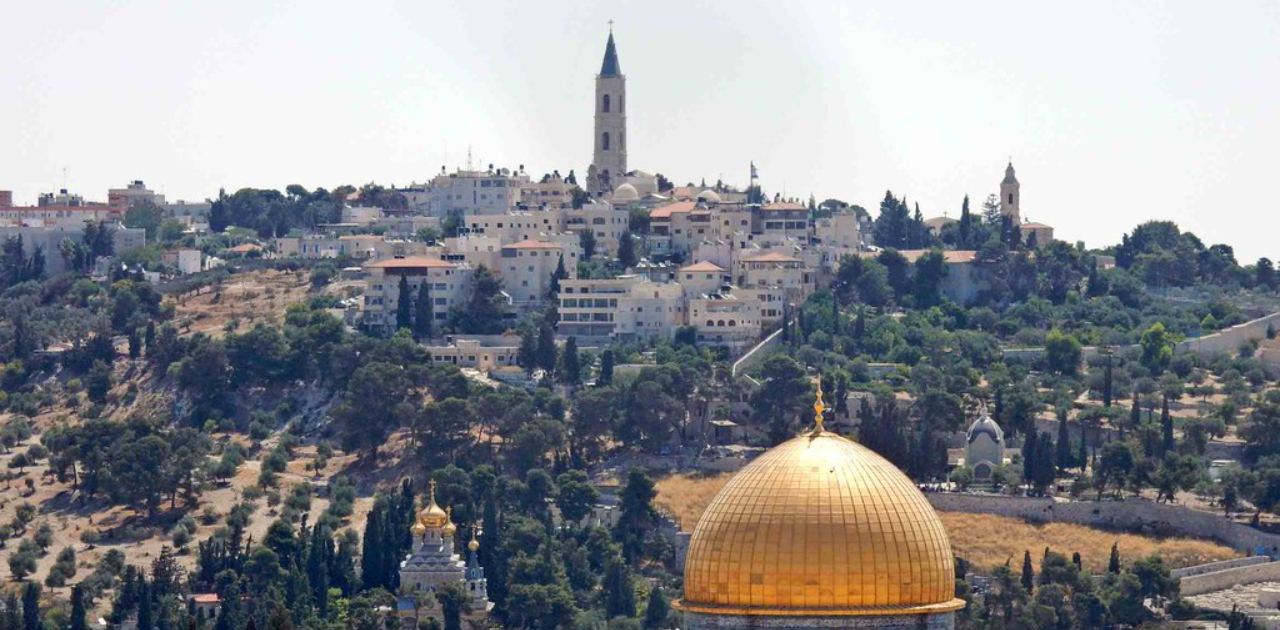In this series, we are exploring some of the main sites on the Mount of Olives, several of which we typically visit on our “Palm Sunday” walk when we visit Jerusalem. Although we do not usually visit the Chapel of the Ascension on the walk, it is an important landmark on the Mount of Olives. It stands at the highest point on the ridge.

The Bible tells us that forty days after his resurrection (Acts 1:3), Jesus ascended to heaven from the Mount of Olives (Acts 1:6-11). Records from early pilgrims of the Byzantine period indicate that a church stood on the place where Jesus left the earth and rose into heaven. The church was said to consist of a round colonnade built around a piece of bedrock believed to be where Jesus last stood before ascending. The building was also open to the sky, allowing worshipers to look upward just as the disciples who had witnessed Jesus’ ascension did. Nothing visible remains of that structure.

The Crusaders rebuilt on the site and constructed a chapel that replicated some of the original Byzantine architecture. That building was octagonal in shape rather than round. When the Muslim sultan Saladin defeated the Crusaders and took control of the area, the church was converted into a mosque (A.D. 1200) because Muslims also believe in the ascension of Jesus. That conversion involved adding a roof along with a mihrab, the niche that indicates the direction of Mecca toward which Muslims face when praying. Today, a seventeenth-century mosque stands on the site, with some of the Crusader building still visible in the main courtyard.
Today, Christians are permitted to hold services there only on Ascension Thursday, but pilgrims can pray there on any day.
Featured image “Jerusalem” by Flashpacker Travel Guide is licensed under CC BY-SA 2.0.
Footprint and Dome of the Ascension images courtesy of BiblePlaces.com.


